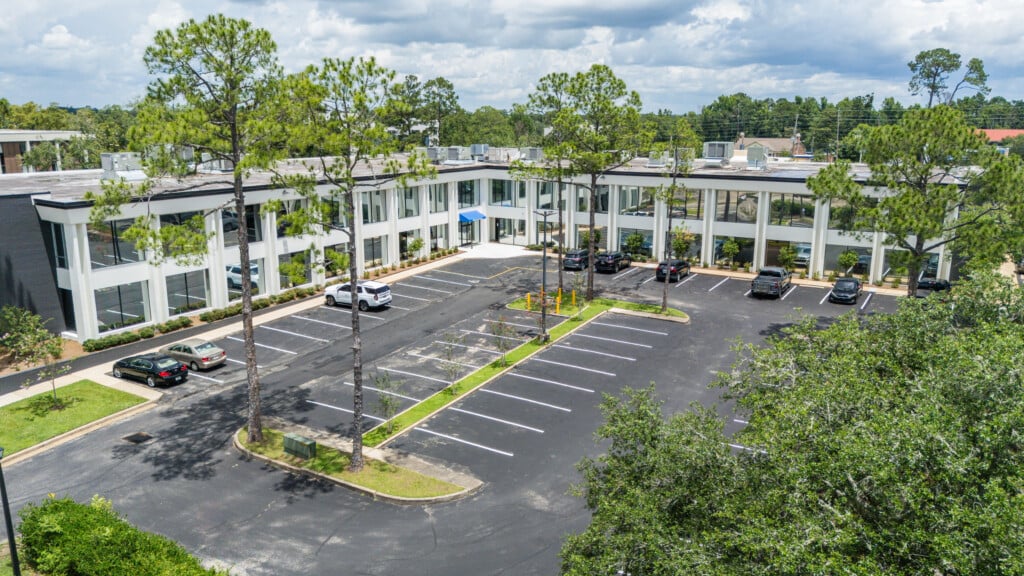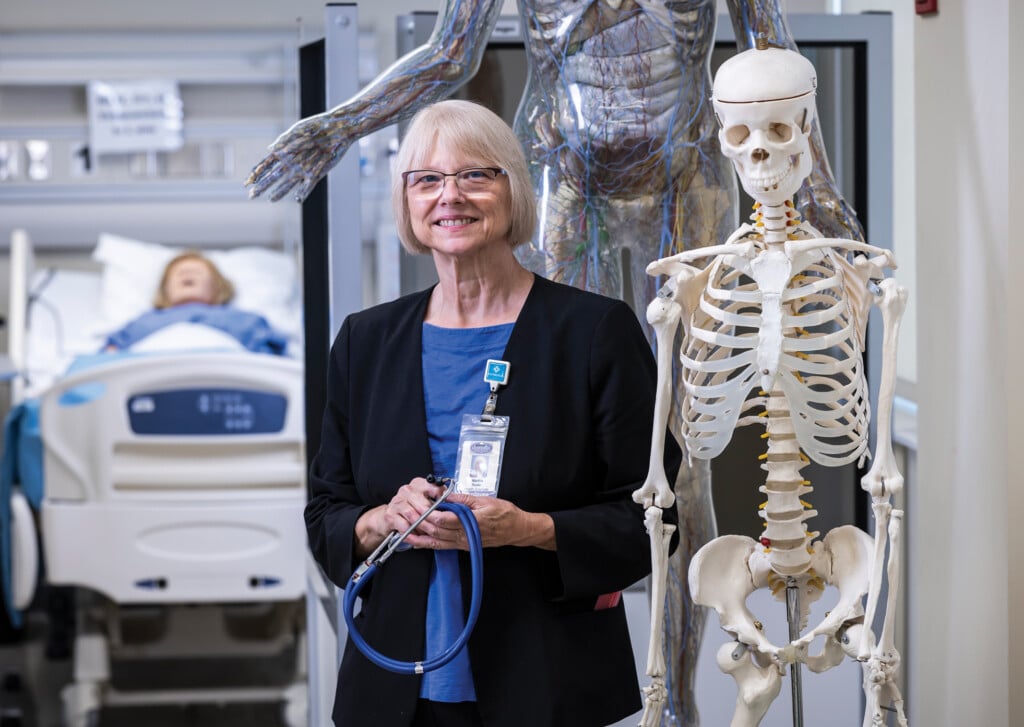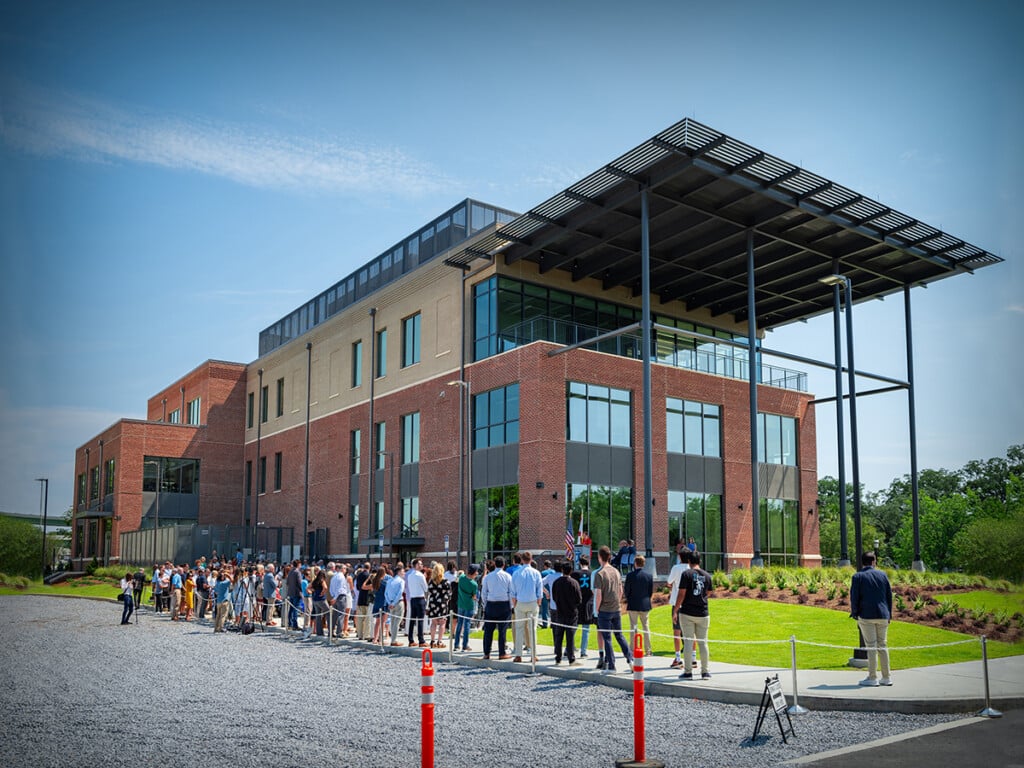The Practice of Invention
Surgeon pioneers products that improve outcomes

Dr. Jim Robinson is a leading brain surgeon and a pioneering medical entrepreneur.
He divides his time between Atlanta, where he performs surgery eight days a month, and his home in Inlet Beach. His work as a subspecialist involves highly delicate brain tumor surgeries and procedures to relieve the symptoms of trigeminal neuralgia, the so-called “suicide disease,” which produces shocks to the face, often at short intervals.
“People will say that it is like being hit in the head repeatedly by lightning,” Robinson said.
He describes surgical cases, not in the manner of boasting, but by way of illustrating the transformations that cutting-edge medicine can accomplish.
Dorothy Anning, a girl from Ghana, was 13 when Robinson met her. She presented with a horribly disfiguring tumor that had grotesquely distorted her face and reached deep into her brain.
The tumor was benign, but it had become life-threatening and had to be removed. Radiate such a tumor, Robinson said, and there would be a 50% chance that it would become a sarcoma-type cancer.
Robinson operated on Dorothy, whom he had brought to the United States, for a total of 23 hours spread over two days. Subsequently, she underwent two rounds of reconstruction surgery. Today, she is a physician’s assistant and has earned a master’s degree in public health.
Never is Robinson satisfied that surgeries cannot be made safer, more reliable, less painful and less disruptive. He is working to bring to market products and processes designed to bring about improved outcomes in patients undergoing neck, spine and joint-replacement surgeries and receiving dental implants.
His first forthcoming product launches will relate to spinal fusion operations.
Robinson was just coming out of residency when Medtronic, a maker of medical devices, introduced the first minimally invasive endoscopic system for performing simple spine operations; it was initially approved for use in lower-back microdiscectomies.
Robinson viewed the system as a modest gain — it reduced the size of the incision required for microdiscectomies — but one that might lead to more and more consequential advances.
He accomplished surgical firsts, performing surgeries in the thoracic spine and cervical spine areas and did the first instrumented fusions with the new system. He made the first direct lateral approaches to the spine.
His career as a medical innovator was underway.
Robinson developed an alternative to pedicle screws, which amount to a lot of hardware and are used in laminectomies, operations performed to remove a part of a vertebra and relieve pressure on the spinal cord. His device is a clamp with teeth that is driven into the spinous process — the protruding fin-like part of a vertebra — and secured with a single set screw; it presents no risk of nerve damage or spinal fluid leaks.
Robinson sold that product to Medtronic. It is now marketed as the Spire spinous process plate. He later sold Medtronic a second patent for the VeNTURE anterior cervical plate, which is used in neck surgeries, and sold additional patents to smaller companies.
He has calculated that sales of the products he sold to Medtronic and other companies have exceeded $500 million.
Inventing products and selling patents was “cool, but it really wasn’t fun,” Robinson said. “I wanted more control over my products, and I wanted to stay in the game to capture more value for myself and because I enjoy it.”
So it is that Robinson has started his own business incubator, Spectrum Spine, Inc. He has invested $5.5 million of his own money in the enterprise and has attracted investors with one capital raise, and a second one is in the works. To date, Spectrum Spine has secured FDA approval for seven projects and has secured more than 70 patents.
Robinson has arrived at several designs for interbody cages, which are implanted to fill space in the spine once occupied by discs that have since degenerated. At this point, they are undergoing testing in preparation for submission to the FDA for approval.
In development are cages that are relatively small upon installation and then expand.

Photo by Mike Fender
“They are much less traumatic to bone surfaces,” Robinson said. “When you are whacking a full-size implant in place with a mallet, you tend to fracture the thin vertebral bone called the apophyseal ring. You get it in, and it looks really pretty, and then the patient comes back a month later in pain because the implant has settled in through the bone.”
Expandable implants help resist such cave-ins and are a big part of Robinson’s patent portfolio.
He is also at work on a process, called BioBraille surface technology, which is aimed at bringing about greater success rates and speedier recoveries in titanium implant surgeries ranging from teeth to knees.
At a space leased from an equipment distributor an hour outside of Atlanta, the Spectrum Spine team is using femtosecond lasers — a femtosecond is a quadrillionth of a second — to texture titanium in degrees measured in nanometers. Doing so creates a biologically active surface that promotes bone growth and bonding with implants.
“Orthopedic operations have a significant failure rate because of bone failing to heal,” Robinson said. In the spine, he explained, “we are trying to bridge a gap between vertebrae, usually where a disc was. It’s a narrow gap that is under compression, which is favorable.”
Previous efforts to etch titanium relied upon the use of acids. The laser, Robison said, is superior because its use results in a far more intricate patterning of the titanium.
“The laser is very cool,” he said. “Its energy evaporates the metal without creating enough heat to melt it. If it were hot enough to melt it, you wouldn’t get the complexity that we are seeing.”
In a Nov. 1 update to Spectrum Spine investors, Robinson reported that “we have strengthened our intellectual property position on our BioBraille surface technology with the issuance of U.S. Patent 11,771,528 on Oct. 3, 2023, to bolster the 14 patents already issued on the technology.”

Photo by Mike Fender
Robinson and company also have taken their show on the road, presenting research on BioBraille technology at a meeting of the International Society for the Advancement of Spinal Surgery in San Francisco in June 2023 and at the North American Spine Society’s annual meeting in Los Angeles in October 2023.
Spectrum Spine has completed a study in sheep, which demonstrated the capacity for growing bone in the opening in interbody cages versus relying upon a bone graft.
“We can just pattern the implant and grow bone all the way through it,” Robinson said, adding that all bone graft products have potential problems.
“People don’t particularly like the idea of getting cadaver bone,” he said. “There is legitimate concern about transmission of viruses. Bone graft products for spinal fusions, alone, is a $5 billion annual market in the United States. If we can prove this out and the FDA permits us to put our implant in with no bone graft, nobody has that. The value creation is absurd.”


